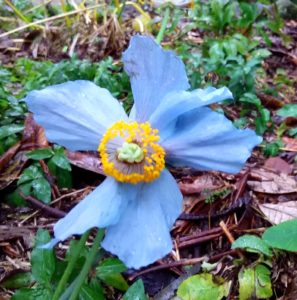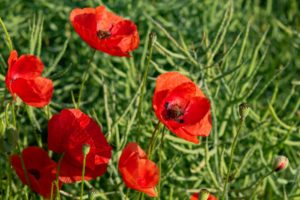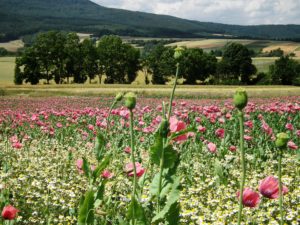Poppies are among the prettiest of garden flowers, and we all want them in our gardens. But there are so many varieties, all flowering at different times of the year, that knowing when to sow and grow them can be confusing to the point we miss out on them altogether! To make things easy, and ensure you get these colourful ‘wind-flowers’ in your garden, follow our simple, season by season ‘pop-in-a-poppy’ guide.
Winter wonders
 If you live in one of our country’s colder regions, your poppy pleasure may have to be confined to flipping through gardening magazines. Then again, you could try sowing the stunning Meconopsis blue poppy, as winter is the time to do this. Unfortunately, Meconopsis blue is one of the most difficult poppies to raise from seed so if you decide to give it a go, contact your local garden club for advice.
If you live in one of our country’s colder regions, your poppy pleasure may have to be confined to flipping through gardening magazines. Then again, you could try sowing the stunning Meconopsis blue poppy, as winter is the time to do this. Unfortunately, Meconopsis blue is one of the most difficult poppies to raise from seed so if you decide to give it a go, contact your local garden club for advice.
Those who live in warmer and northern parts of the country get their first taste of poppy colour from the Iceland poppy. It begins showing off its crinkly yellow, orange and salmon-coloured flowers in late winter and continues to bloom right through spring. These poppies take 24 weeks to flower from seed so sow them in mid to late summer.
Spring surprises
 The Flanders poppy which we associate with ANZAC Day, and its cousin the Shirley Poppy flower first in spring and continue to bloom right through summer. These poppies are both Papaver rhoeas and, in fact, the Shirley poppy was bred from the Flanders poppy. The Flanders poppy, in particular, has a very flimsy stem so it is best sown among other stronger-stemmed flowers which help it to keep upright in windy conditions. Although it is possible to buy the seed of the Flanders poppy separately, it is usually amongst a wild flower seed collection, and it is these other wild flowers that help protect it.
The Flanders poppy which we associate with ANZAC Day, and its cousin the Shirley Poppy flower first in spring and continue to bloom right through summer. These poppies are both Papaver rhoeas and, in fact, the Shirley poppy was bred from the Flanders poppy. The Flanders poppy, in particular, has a very flimsy stem so it is best sown among other stronger-stemmed flowers which help it to keep upright in windy conditions. Although it is possible to buy the seed of the Flanders poppy separately, it is usually amongst a wild flower seed collection, and it is these other wild flowers that help protect it.
Shirley and Flanders poppies take around 20 weeks to flower from seed. The seed is not difficult to germinate and we get a very obvious reminder about when to sow them. When ANZAC Day comes around, that’s when you reach for the seed packet!
Summer sizzlers
 Opium poppies come in a dazzling array of colours and shapes. Some have frilled petals a little like a parrot tulip while others are double and look like a ruffled crepe paper version of the real thing! These poppies are sometimes targeted by thieves who wish to harvest their seed heads for use in making opium so if you decide to grow them, do so in a discreet part of the garden.
Opium poppies come in a dazzling array of colours and shapes. Some have frilled petals a little like a parrot tulip while others are double and look like a ruffled crepe paper version of the real thing! These poppies are sometimes targeted by thieves who wish to harvest their seed heads for use in making opium so if you decide to grow them, do so in a discreet part of the garden.
Opium poppies are frost hardy, and like to germinate in cool conditions. The flowers don’t last long so sow seed directly into the garden (not a seed tray) every 2-4 weeks throughout spring. And here’s a tip: if you can’t locate the seed in a garden centre, look on Trade Me.
The biggest beauty in the poppy world is the Oriental poppy which produces flowers up to 8cm in diameter. It flowers in summer and is a perennial, but you will have to be patient for this one. Seed needs to be sown in February and the plant blooms the following summer. This poppy is quite happy to spend its early days in a pot so don’t be afraid to sow it into a seed tray and then pot it up, ready to plant out 8 months later in spring.
Although there are many more varieties of poppy you can try, these beautiful basics will get you started, and turn your garden into a riot of colour!










Join the Discussion
Type out your comment here:
You must be logged in to post a comment.